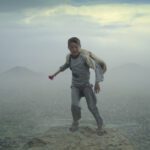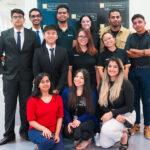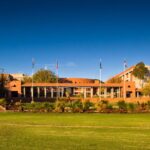In the Nyungar language the word Dandjoo means gathering.
A group of Curtin University journalism students and film, television and screen arts students have gathered stories about the Nyungar culture to produce the fourth instalment of the award winning television series Noongar Dandjoo.
Students, lecturers and performers attended the launch of the 2013 series at the John Curtin Gallery on Thursday 28 November.
Noongar Dandjoo will be broadcasted on live on the National Indigenous television channel (NITV) as part of the Special Broadcasting Service (SBS) in early 2014.
The program focused on four themes about Nyungar community; native title, training and employment, preserving the Nyungar language and the connection between Nyungar people and the water.
Russell Bishop, Curtin journalism lecturer and executive producer, who runs the unit with film, television and screen arts lecturer Sally Goldrick, said the program was an opportunity for students to develop a greater understanding of some of the intricacies of the Nyungar culture.
“The program investigates issues of interest with inspirational people from within the Nyungar community in Western Australia,” he said.
“We implement participatory program making, where we work with the Nyungar community to make these stories, so we work on stories with them not about them.”
At the launch, Noongar Dandjoo’s success was not only measured by the number of awards it has won in the past but also by the positive effect it had on the students involved.
Anna Guerrero, journalism student and host of the launch, said the unit went beyond any other course work she had done in her degree.
“It was very practical, because of the skills we learnt and the people we talked to, it really wasn’t assessable, it was an experience,” she said.
“At the end of the series I realised why it was called Noongar Dandjoo, it wasn’t just about gathering stories, it was about gathering people, non-indigenous people and indigenous people, people who in some way were doing their part to fight for Nyungar culture.”
Mr Bishop said the unit was valuable for students wanting to work in the broadcast industry as it provided them with practical skills and informed them about how to work with Aboriginal people.
“We implement work integrated learning, which is to make sure what you are doing in your units fits with what your potential employers want,” he said.
“In Noongar Dandjoo work integrated learning is of upmost importance to what we do, particularly with the production processes.
“But part of the agenda is to change the minds of students for the better, to make them more accepting and thoughtful in their dealings with Aboriginal people,” he said.
Noongar Dandjoo collaborates with Curtin’s Centre for Aboriginal Studies every year and for the first time an Indigenous student was involved in the production.
Kimberley Benjamins, Aboriginal journalism student from the Yawuru Banu tribe in Broome, said she chose to study journalism to change the negative portrayal of Indigenous people in the media.
“I wanted to help change that, which is why I chose journalism, and it’s already happening,” she said.
“I would like to thank Curtin University for valuing Indigenous culture and people, and for showing everyone how special our culture is.”



